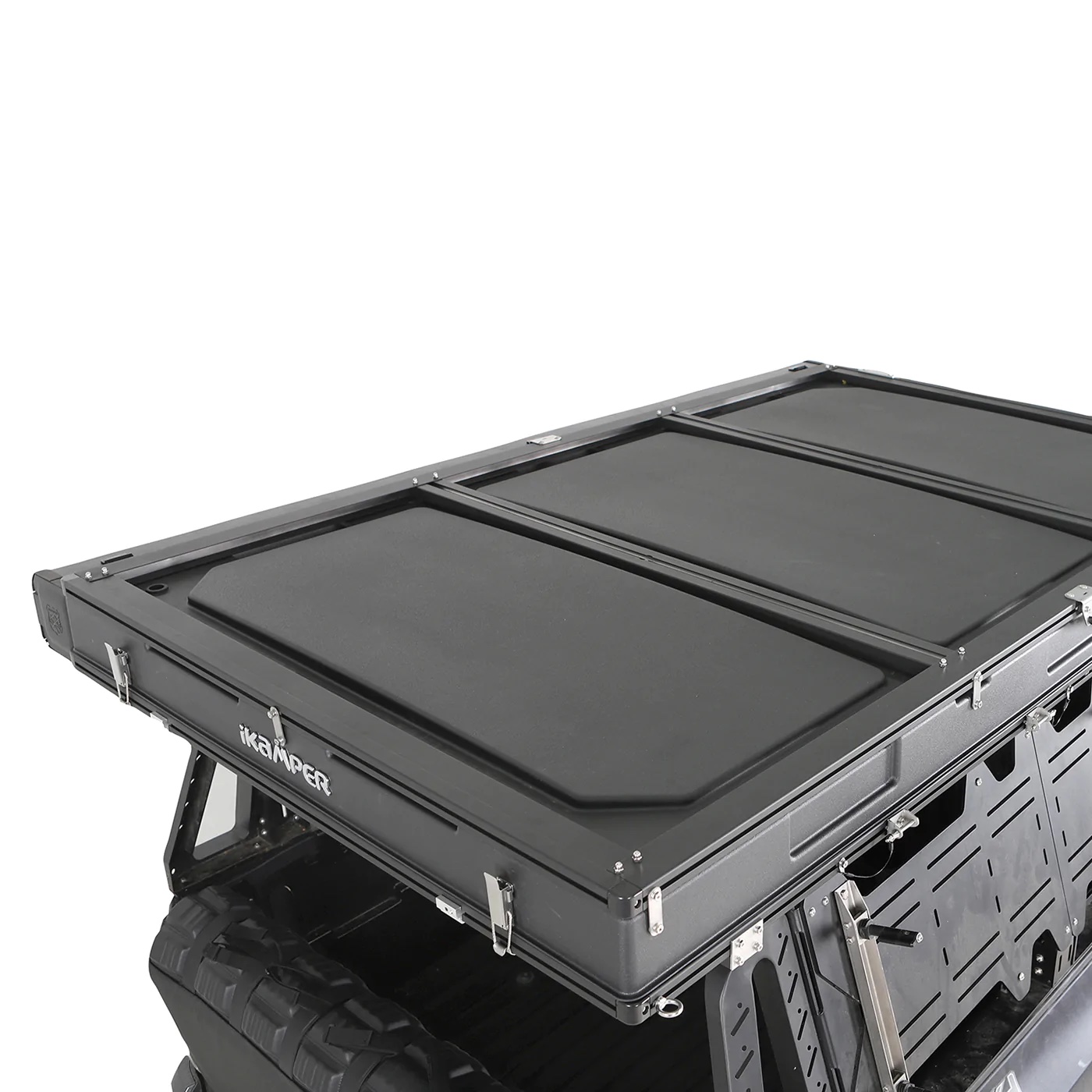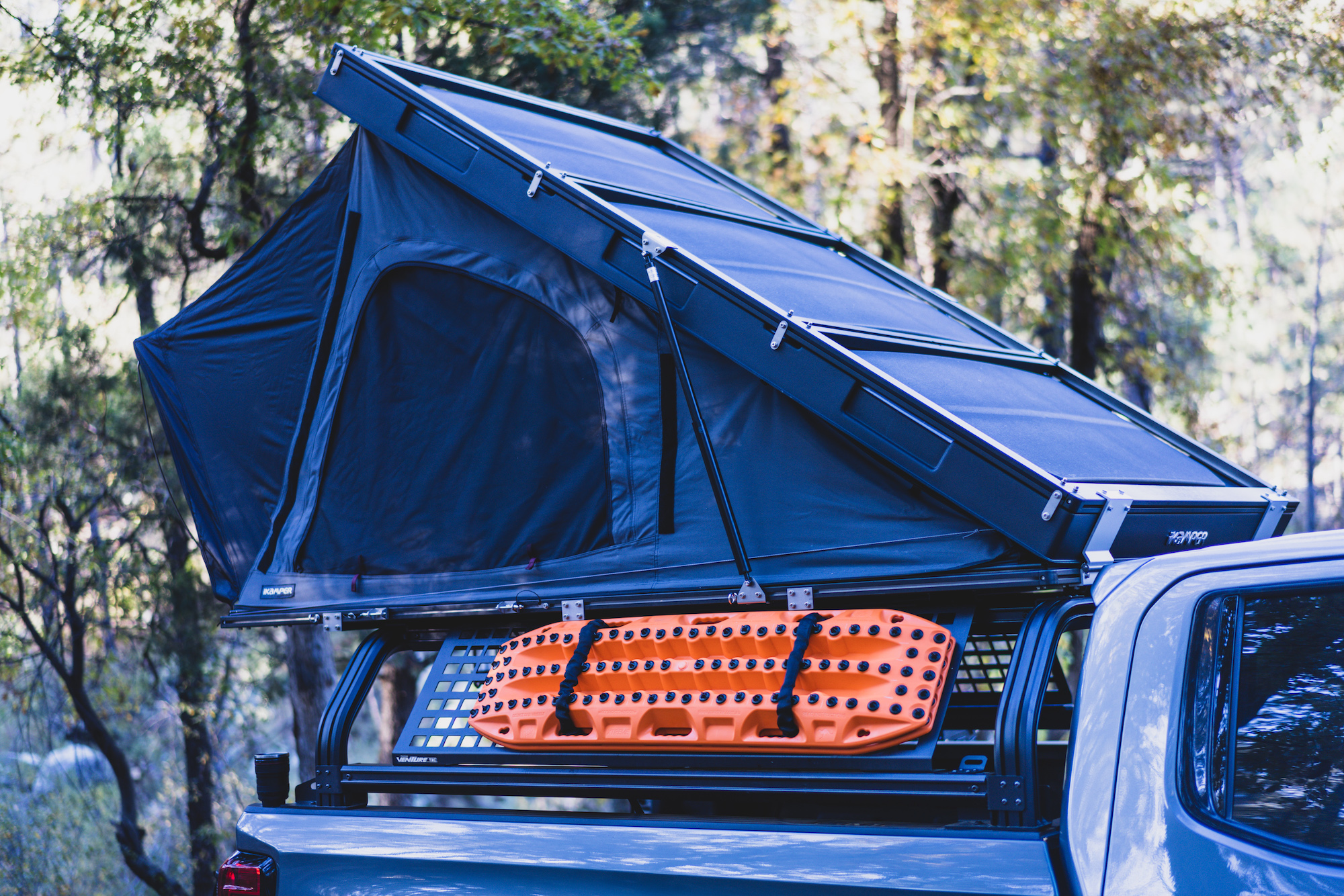The overview effect happens when a traveler reaches far enough into space to look back on Earth and observe their home planet, free of international borders, languages, and cultural divides. A profound shift happens to the voyager, seeing the celestial object as a blue dot. It is a good perspective and often results in a powerful emotional experience and personal awareness. This is often what overland travel imparts for the adventurer, and the inspiration for the name of iKamper’s newest hard shell rooftop tent, the Blue Dot Voyager (BDV) Duo.

We often credit iKamper for being innovative amongst a sea of copycats, and the BDV is no exception. Most notably, it can be purchased unassembled for a savings of $400. Based on the instructions, I would give fair warning to any considering the endeavor—it will be quite the journey. I suspect four to six hours of work, and it should be reserved for the most patient among us. The upside is certainly the cost savings, but more importantly, the personal satisfaction and learning that comes from constructing your abode. Fortunately, there is also an assembled version, which comes lashed to a large pallet and protected in a thick, upright cardboard box.
Installing the roof tent is as easy as others on the market but not quite as easy as the typical iKamper. This unit eschews the much-lauded quick clamps and relies on a standard captive bolt and plate. It isn’t necessarily a negative, but it does take an additional 10-15 minutes to mount the tent. It is also important to mount the tent across three crossbars, as there is some flex in the aluminum structure.

This tent takes a unique approach, using a combination of aluminum extrusions (much like a roof rack), fiberglass reinforced plastic (FRP), and aluminum honeycomb to create the assembly. This results in a large and lighter hardshell tent, weighing in at just under 150 pounds. The structure also allows the tent to be mounted on simple cross bars, as the FRP top has an exoskeleton of its own, which permits the installation of solar panels or even lightweight storage boxes. The 300 gsm blackout poly-cotton canvas tent sides do an excellent job of managing wind and rain. The thickness of the tent walls and the FRP/aluminum superstructure earn this tent a four-season rating, as the roof slope can easily shed snow loads, and the clever rainfly rear entryway allows for both dry landscape viewing, but also the ability to attach (yet to be released) changing walls. I also like having the ability to not use the rainfly entry and poles at all, as the material easily pulls tight to the entryway with a set of pull cords.


The tent is only seven inches tall, and the top allows for installing solar panels and other accessories. Keep in mind that most SUV roof loads do not exceed 150 pounds.
The tent size is optimal for two travelers that like each other, and the mattress is a (just) adequate 2.75 inches. Heavier side sleepers might consider one of iKamper’s many air mattress options. The ladder can be installed on either side of the tent or at the rear and is a heavy-duty telescoping model. There are numerous pockets in the interior for storing sundries, and iKamper thankfully included one of their sewn-in zippered pole sleeves for holding the rainfly spring steel rods.


Overall, the Blue Dot Voyager (BDV) Duo was a comfortable companion to my travels, and it fit perfectly to the Putco roof rack on our project GMC. During my last night of testing, I left the side door wide open and lay looking out upon the Milky Way, struck by the immensity of not only the universe but of my humble place on this spinning blue dot.
$3,699 | ikamper.com

The February 14, 1990 NASA photograph of planet earth, the small dot near the center of the frame. The image was taken from the Voyager I space craft at a distance of 3.7 billion miles (talk about a journey!)




